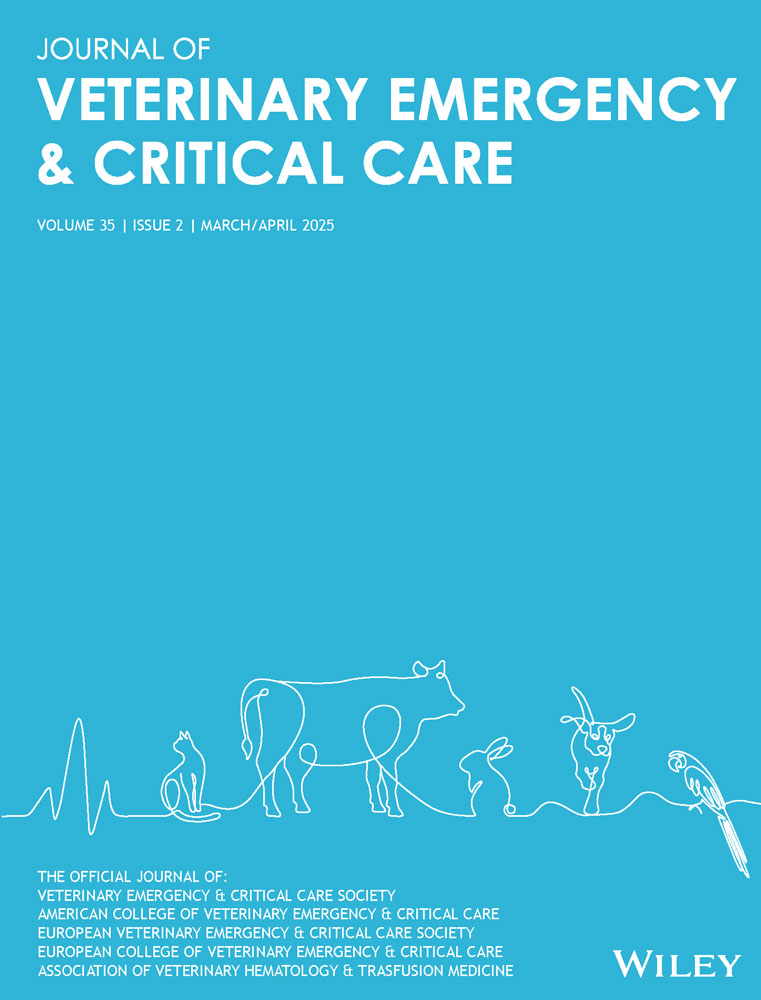Evaluation of Neutrophil-to-Lymphocyte Ratio as a Diagnostic Marker in Dogs With Bacterial Pneumonia
ABSTRACT
Objective
To determine the ability of the blood neutrophil-to-lymphocyte ratio (NLR) to differentiate between bacterial pneumonia and nonbacterial pneumonia in dogs undergoing airway sampling.
Design
Retrospective study.
Setting
A university teaching hospital and affiliated private practice specialty hospital.
Animals
Forty-one client-owned dogs undergoing airway sampling with CBCs performed within 48 h of collecting airway lavage samples between January 2018 and December 2022.
Interventions
None.
Measurements and Main Results
Medical records were reviewed and the following parameters were recorded: signalment, length of hospitalization, WBC count, neutrophil count, lymphocyte count, type of airway sampling, airway cytology and culture results, timing of antimicrobial use, radiographic findings, concurrent diseases, final diagnosis, and outcome. Patients that received corticosteroids or had hematological neoplasia were excluded. Of the 41 dogs included, 51.2% (21/41) were diagnosed with bacterial pneumonia. Twenty-three patients (56.1%) received antimicrobials before airway lavage, and 11 (47.8%) of these dogs were diagnosed with bacterial pneumonia. Of the 18 patients (43.9%) that did not receive antimicrobials before airway lavage, 10 (55.6%) were diagnosed with bacterial pneumonia. One dog (2.4%) underwent a transtracheal wash, 16 (39%) underwent a bronchoalveolar lavage, and 24 (58.5%) underwent an endotracheal wash. NLR was not significantly associated with bacterial pneumonia (P = 0.248). In dogs with bacterial pneumonia, NLR was not associated with mortality (P = 0.454) or length of hospital stay (LOS) (P = 0.282). NLR was positively associated with LOS when all dogs were analyzed together (P = 0.042).
Conclusions
NLR was not different in dogs with bacterial pneumonia than in dogs without bacterial pneumonia. NLR was positively associated with LOS when all dogs were included in the analysis (P = 0.042).
Conflicts of Interest
The authors declare no conflicts of interest.




